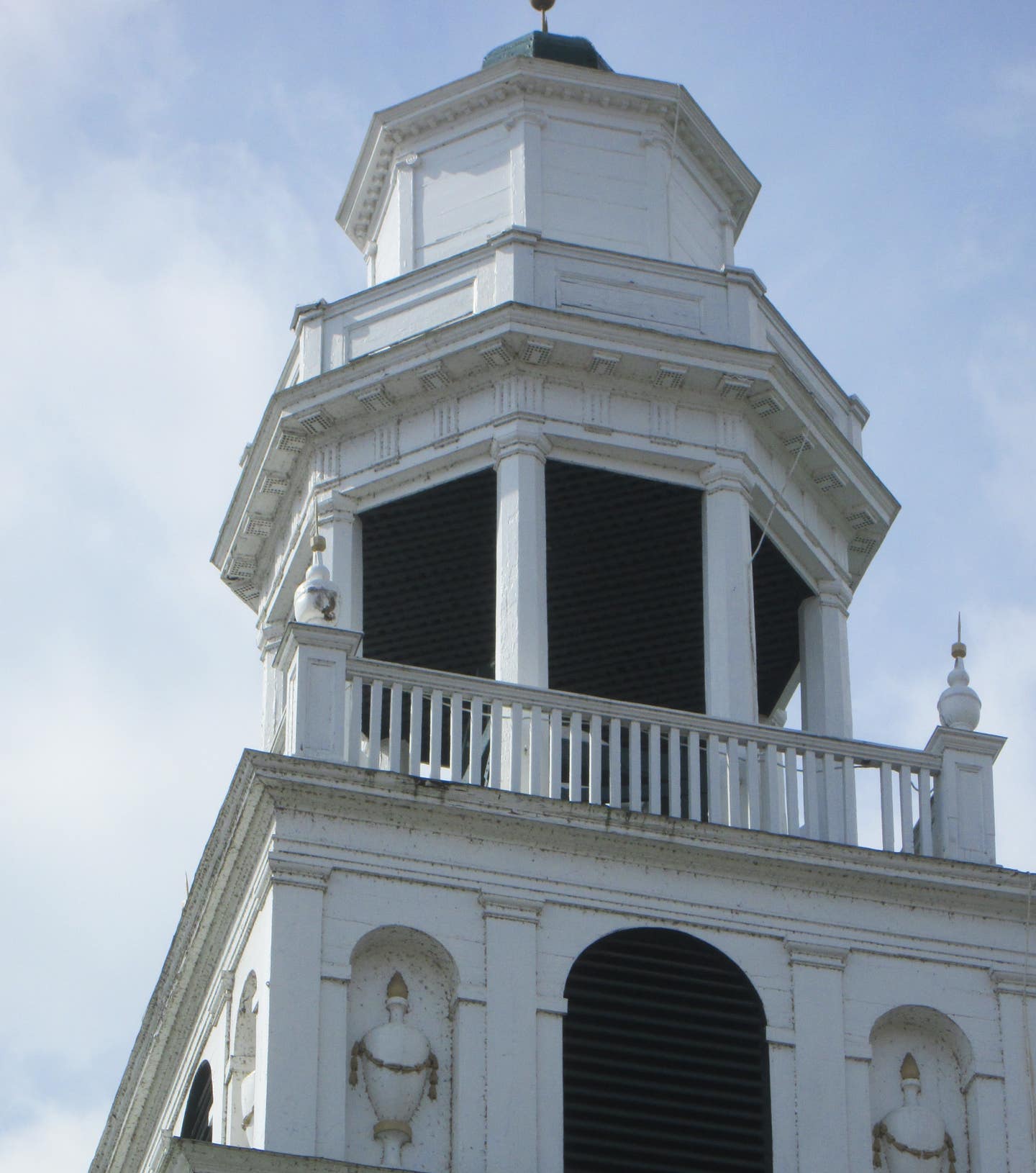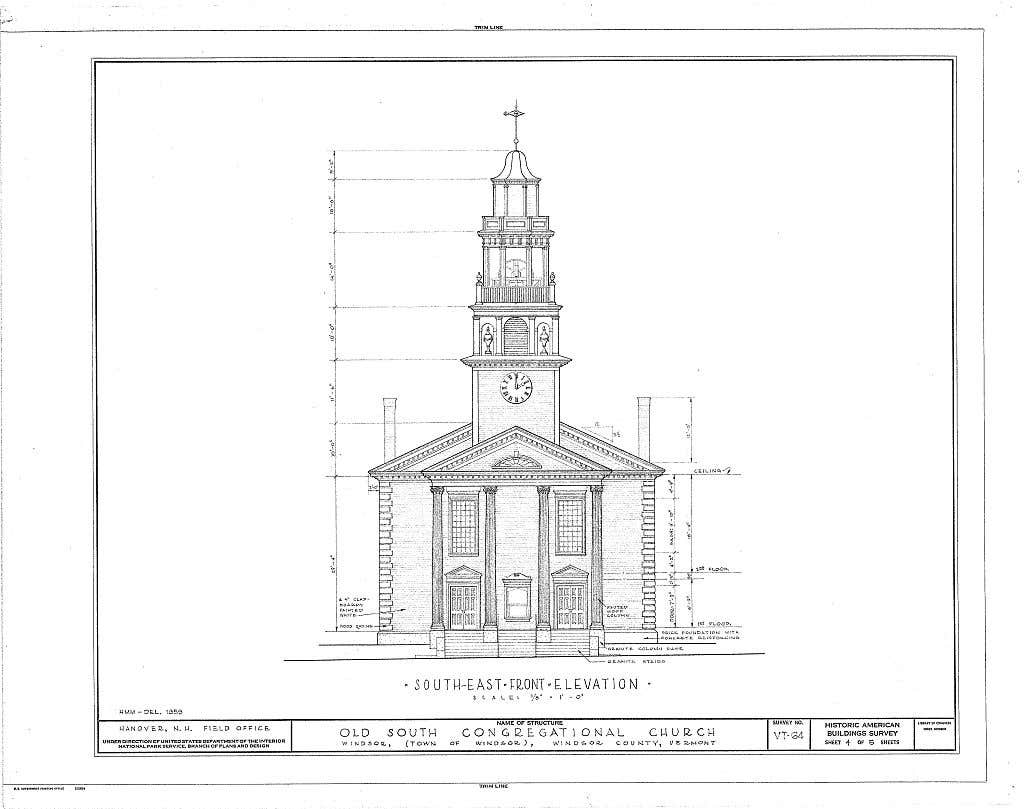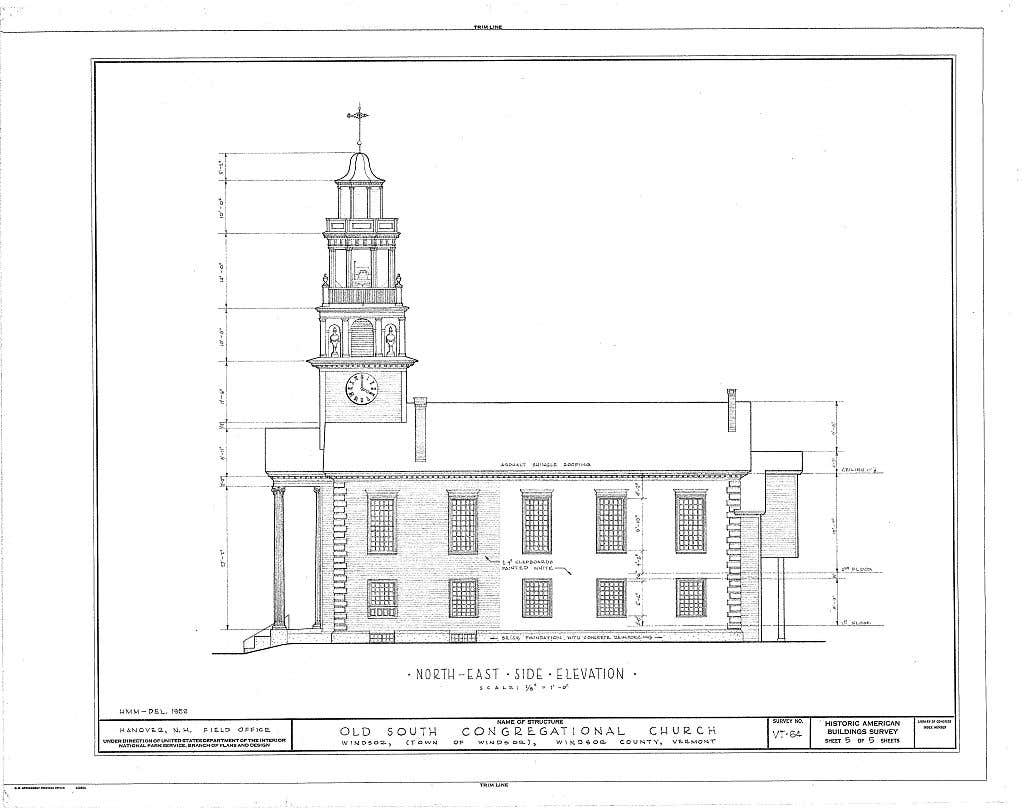
Judy Hayward
The Contributions of Asher Benjamin
In celebration of the founding of the congregation of Old South Church in Windsor, VT, 250 years ago, I was asked to give a talk about Asher Benjamin (1773-1845), the architect and master builder of its second meeting house, built in 1798. Benjamin is well-known to the readers of Traditional Building. His seven architectural pattern books were published in over 40 editions and guided many builders and architects in the design and construction of architectural elements in the classical vocabularies of Federal and Greek revival buildings.
The Country Builder’s Assistant was published in 1797; Benjamin arrived in Windsor, Vermont’s largest town at that time, just one year after its publication, to supervise the construction of the meeting house at a cost of $5,000. The meeting house would be the first realization of a plan he drew in that first book. He was 25 years old.
The signing of the Declaration of Independence on July 4, 1776 is recognized as the birthday of the United States; when Benjamin arrived in Windsor, this country was only 22 years old. Asher Benjamin and the citizens of the United States were young, ambitious and ready to build buildings, communities and a nation.
While in Windsor, Asher Benjamin built what would become Old South Church and three other buildings. He placed an advertisement in the four issues of the Windsor Gazette in early 1802 announcing the formation of a school of architecture. We don’t know if anyone ever enrolled, but by 1803, he had moved on to Boston.
While in Boston, he served as an alderman and became part of the “Middling Interest,” a group that recognized the growing importance of artisans and others to the financial well-being of the expanding United States. This effort was an early political recognition of what we now call the middle class.


It is clear from his writings and life that he had a generous spirit. He willingly shared his knowledge with others so that they could build well for their own honor and the benefit of their clients and a young nation forging an architectural identity.
The fact that he attempted to establish a school reinforces this generous spirit and his philosophy that a little education could go a long way to benefit the “young builders” to whom he appealed. His efforts to give a political voice to the middle class – not poor and not intellectually or financially elite – demonstrate that he knew his work and that of his fellow builders could be good for building buildings, people and the nation.
So, let’s remember Asher Benjamin and the generations of American builders and architects he has inspired and aided in making a good living through good design and building practice.
If you would like to view the presentation about the legacy of Old South Church and Asher Benjamin, here’s the link to Windsor-on-Air’s video, http://woa-tv.org/site/2018/07/02/the-legacy-of-asher-benjamin-old-south-church/
Judy L. Hayward spends her days pursuing a passion for historic architecture and the ways in which it can be reused to sustain and grow healthy communities. She develops courses in partnership with builders, architects, traditional craftspeople and others to teach both historic preservation and traditional building skills. She has one foot in the nonprofit world as executive director of Historic Windsor and the Preservation Education Institute and the other foot in the world of media and information services as education director for the Traditional Building Conference Series and Online Education Program.








